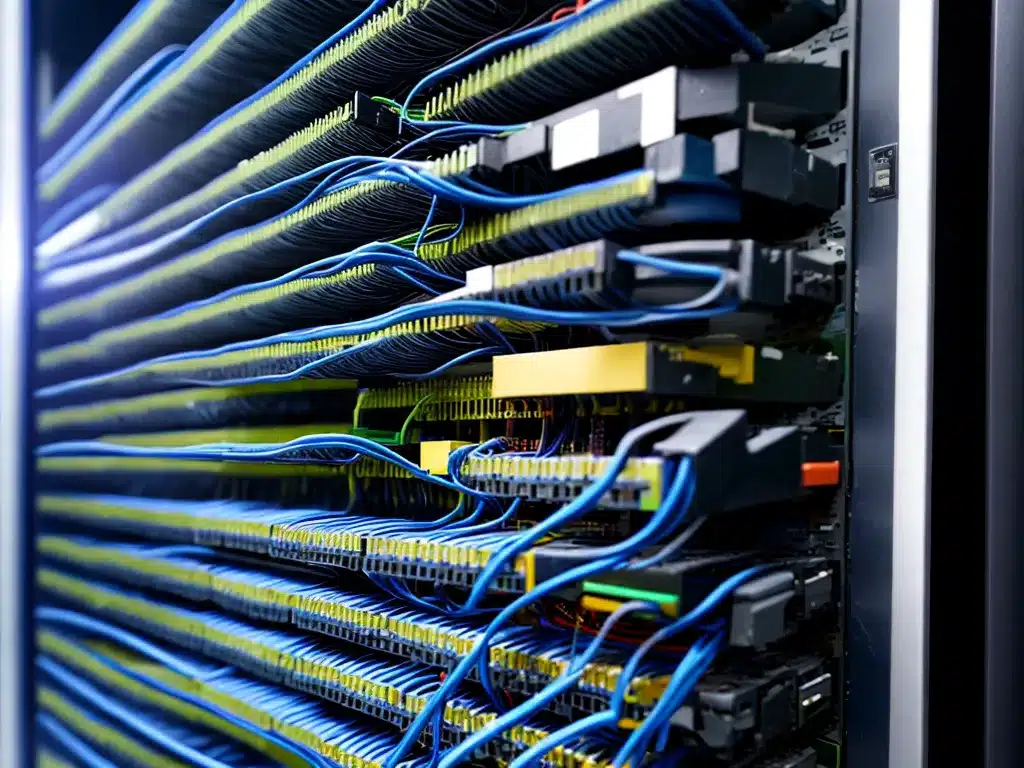
Introduction
Upgrading network switches is an important part of maintaining a robust and reliable network infrastructure. As demands on the network change over time, older switches may no longer be adequate to meet performance, security, or reliability needs. Knowing when it is time to upgrade switches can help avoid problems and keep the network operating optimally. In this article, I will discuss when to consider upgrading network switches and the factors to evaluate when making this decision.
Signs It May Be Time to Upgrade
Here are some key signs that indicate it may be time to upgrade your network switches:
Performance Issues
If users are experiencing slow network performance, high latency, or bottlenecks, the switches may be to blame. Upgrading to newer models with more bandwidth, processing power, and improved quality of service can boost performance. Evaluate whether performance issues are caused by the switches versus other factors.
Limited Capabilities
Older switches often lack capabilities that are now considered standard, like PoE, stacking, robust QoS, and high port density. If the switches are missing features your business needs, an upgrade is in order.
End of Support
Vendors end support and security patches for older switch models. Using switches that are no longer supported can present security risks and make it hard to get help if problems occur.
Technology Changes
Have new systems or software been deployed that the old switches aren’t designed for? For example, a new VoIP phone system may require PoE switches. Or you may need switches that work with the latest protocols.
When to Upgrade Network Switches
Some common scenarios that indicate it’s time to upgrade network switches include:
More Network Bandwidth Needed
If network bandwidth demands have increased significantly, old 100 Mbps or even 1 Gbps switches may need to be upgraded to higher bandwidth 10, 25, 40 or 100 Gbps models. This is especially true for backbone and distribution layer switches.
New Company Office or Remote Location
When opening a new office, upgrades should be considered to provide the latest technology. Standardizing on switch models across locations can also simplify management.
Support for Higher Speed Network Standards
To utilize newer standards like 2.5, 5, or 10 Gbps Ethernet for servers and clients, the switches much match or exceed these speeds. Upgrading allows taking advantage of faster networking standards.
Switch Failure
Individual switch failure may indicate aging models need to be replaced across the network to avoid further issues. It’s a good opportunity to standardize switches.
PoE Power Needed
Adding VoIP phones, security cameras, Wi-Fi access points and other PoE devices may require upgrading to PoE switches. Calculate PoE requirements to choose an optimal PoE switch.
Improved Reliability Needed
Old switches may not offer redundancy and resiliency features needed for highly available networks. New switches can add redundant power supplies, uplinks, stacks, and other reliability enhancements.
Choosing New Business Switches
When selecting new switch models, key considerations include:
- Performance – Port speeds and bandwidth, backplane capacity, throughput, latency, QoS support, buffer size
- Capability – PoE, stacking, Layer 3, high port density, management features
- Compatibility – Network topology, cabling, protocols, VLANs, uplink types
- Reliability – Redundant power supplies, fans, management modules, hot swappable
- Manageability – Deployment options, management interfaces, automation support
- Support – Length of hardware/software support, replacement options
- Budget – Upfront cost, licensing, power consumption
Take time to evaluate options and choose the right switch to meet current needs and provide room for future growth. Consulting with vendors and resellers can help narrow down the best choice.
Summary
Here are some key points to take away:
- Monitor network performance and capability gaps to identify when switches are outdated
- Upgrade switches to address performance issues, missing features, lack of support, or technology changes
- New offices, network standards, PoE, and reliability needs are also good reasons to upgrade
- Carefully evaluate switch requirements and options when upgrading to maximize value
- The right new switch can resolve problems and provide a solid foundation for future growth
Upgrading network switches requires planning but pays dividends through improved performance, capabilities, and reliability. By proactively identifying when switches need to be upgraded and selecting optimal new models, businesses can cost-effectively keep their network infrastructure running smoothly.












